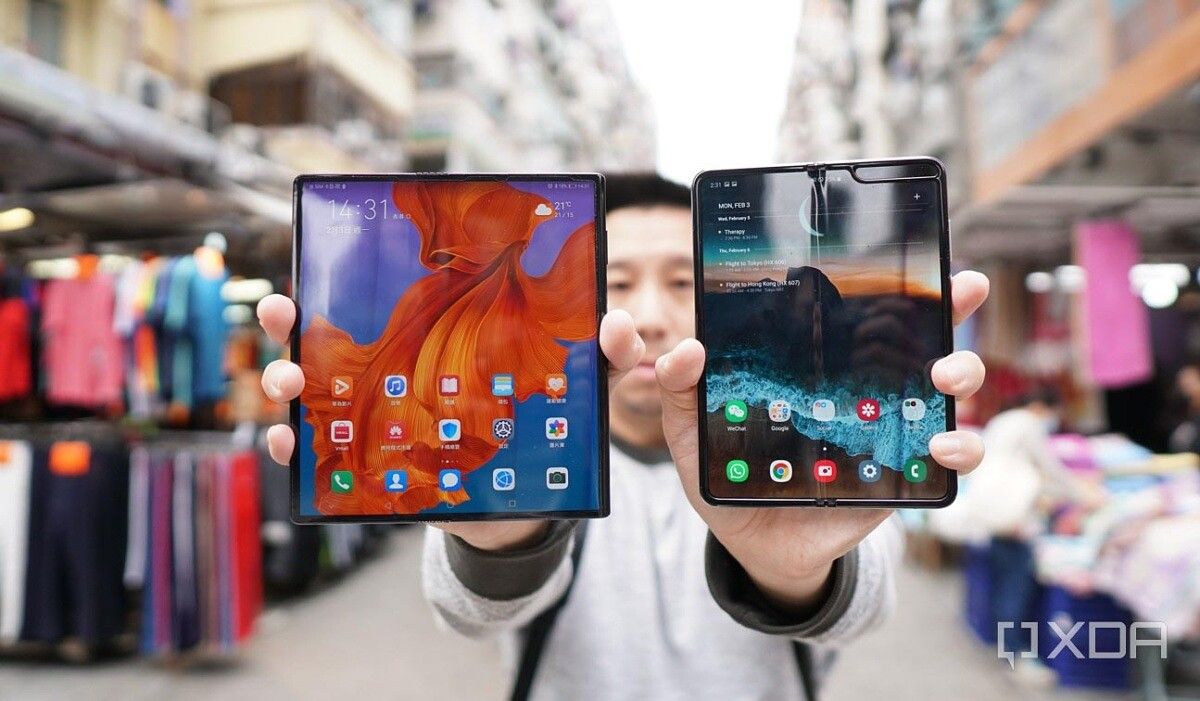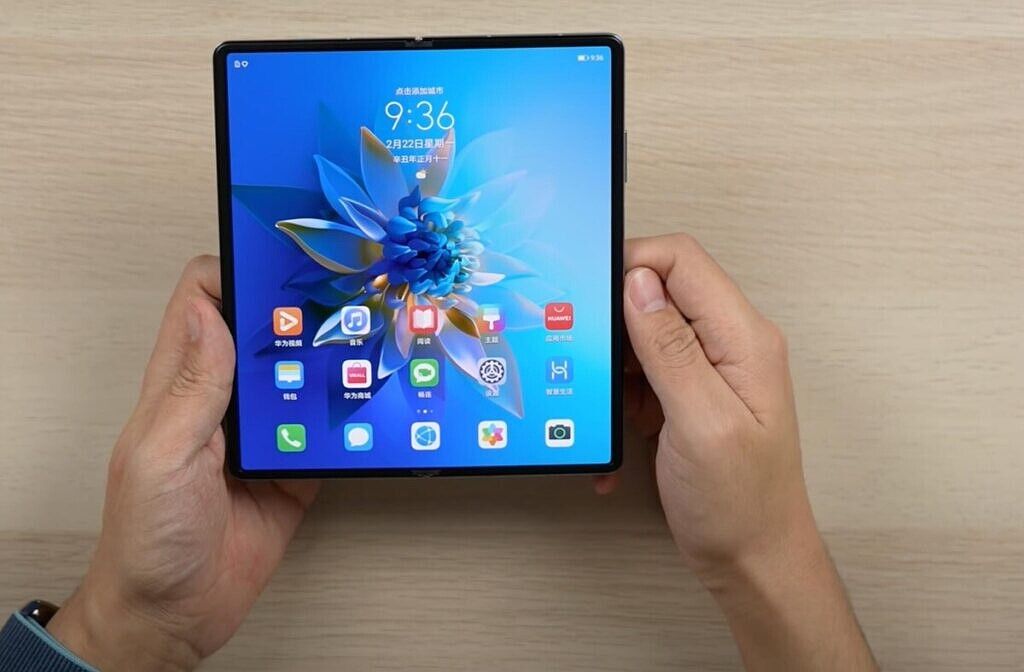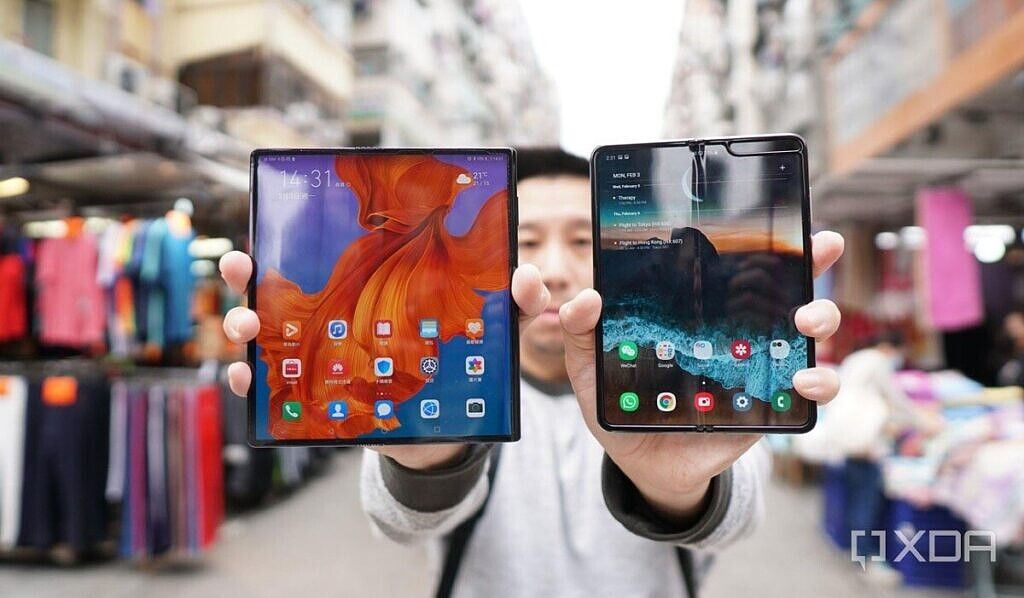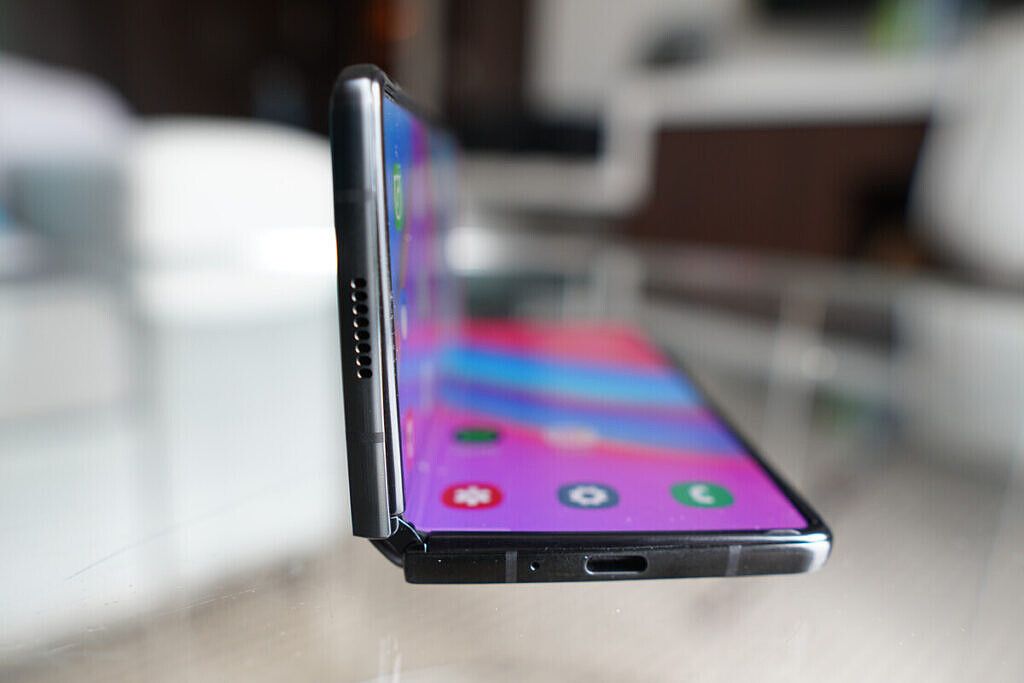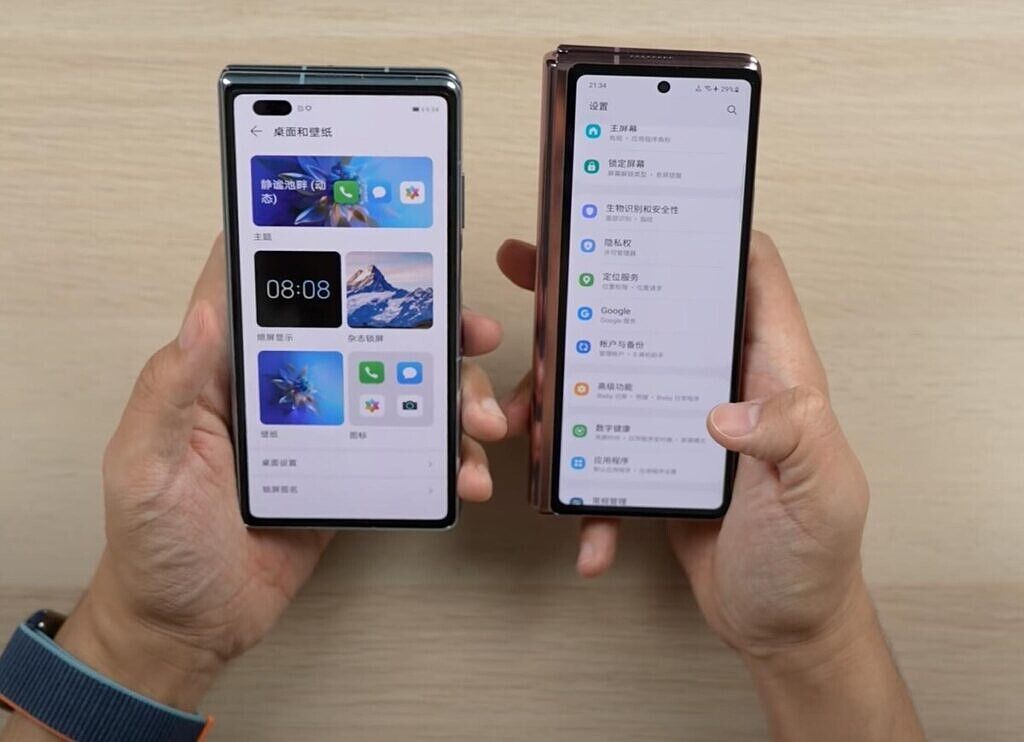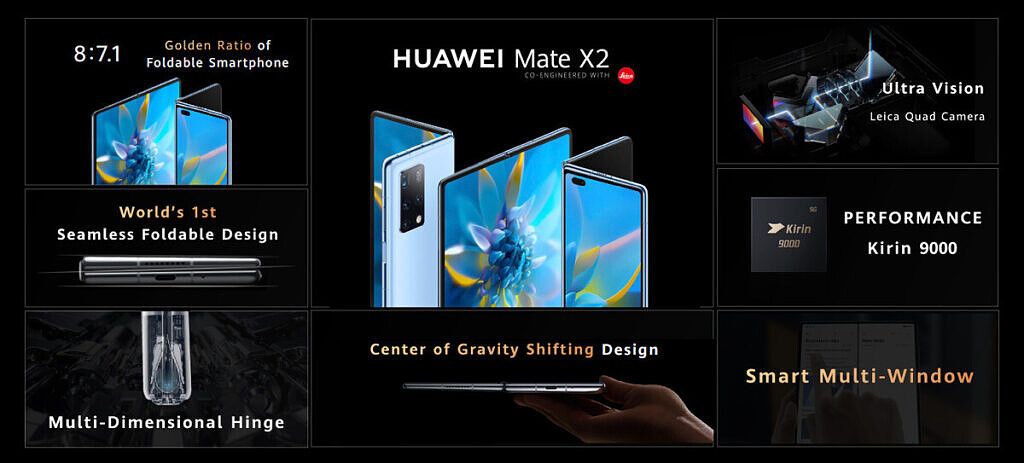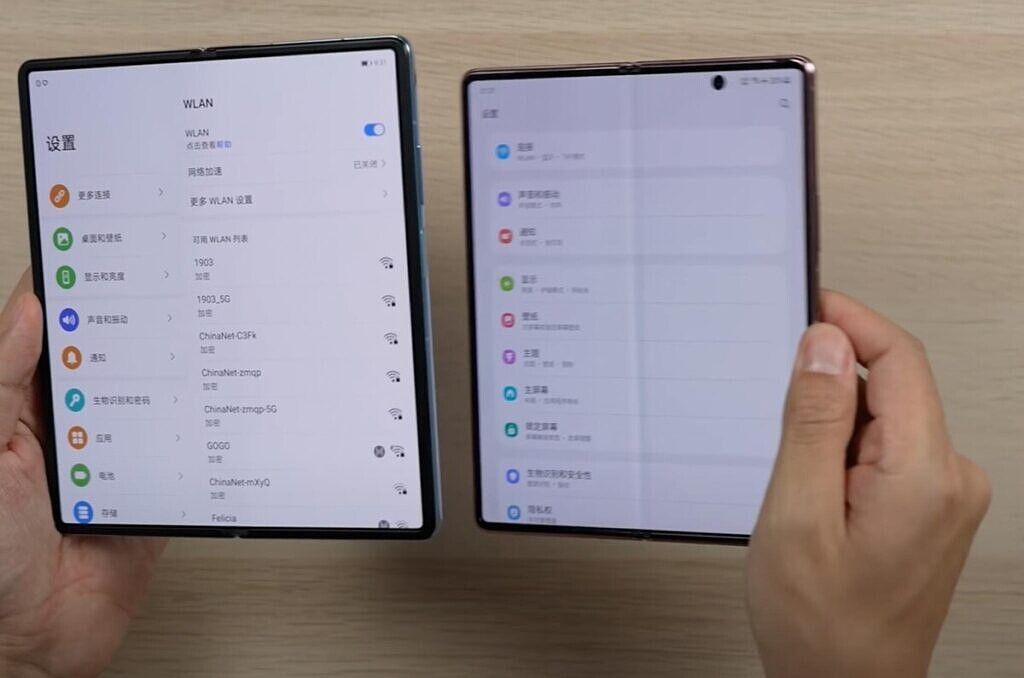This week, Huawei launched its third foldable phone, the Mate X2, and it appears to be an awe-inspiring piece of hardware, which is par for the course for Huawei. From the way the hinge folds completely flat, to the less noticeable crease, to the fact Huawei managed to cram a Periscope zoom lens into a folding device, these are all hardware accomplishments that one-ups the Samsung Galaxy Z Fold 2.
However, there's no getting around the elephant in the room: the Huawei Mate X2 is a backtrack in folding philosophy for Huawei.
There are only two directions to fold a single sheet of bendable glass: either inward, with the screen closing in on the user; or outward, with the display side bending backward away from the user. Huawei's first two foldables, the Mate X and Mate XS, took the outward-fold approach, while all three of Samsung's foldable devices to date fold the other way around.
As is the case whenever two philosophy emerges, each side had its supporters and detractors. In tech media, most writers/reviewers, including myself, preferred Samsung's inward-fold approach because the flexible screen is protected when folded.
But there were quite a few reviewers who preferred the outward-fold style, mainly because they didn't like that the inward-fold style required a second smaller screen on the outside.
With the Mate X2, Huawei has conceded that the inward-fold style is the superior way to fold. This normally wouldn't be an issue, in my opinion, were it not for the fact that Huawei's consumer boss Richard Yu had criticized the inward-fold approach during the Mobile World Congress 2019. I was in attendance at the press conference when he criticized the need for a second screen.
I have used both Huawei and Samsung's previous foldable phones extensively in the real world as my daily driver, and the experiences couldn't be more different. With the Huawei Mate XS, I never felt fully comfortable using it in the real world because the soft, plasticky, bendy screen was always exposed. I felt like I had to baby the device all the time. Whenever I put it down on a tabletop, I'd do so gently, so the screen wouldn't get scratched or dinged.
With the Galaxy Fold or the Galaxy Z Fold 2, I was able to use it with much more peace of mind because the most important/fragile/expensive part of the device is protected when it's not in use. I can shove a folded Galaxy Z Fold 2 into my bag pocket or just put it on a table without needing to go out of my way to be gentle.
That said, I really like what I see from the Huawei Mate X2. The outer (secondary) 6.4-inch screen has an aspect ratio of 21:9, which is still slightly narrow, but nowhere near as cramped as the Galaxy Z Fold 2's 25:9.
And as mentioned earlier, Huawei found a way to cram its best possible flagship camera system into the Mate X2, while Samsung compromised and used an inferior camera system for the Galaxy Z Fold 2 compared to what was available on the Galaxy Note 20 Ultra. The hinge is also less visible thanks to dual fold structure, similar to the hinge seen in Motorola's foldable Razr series.
Of course, the Mate X2 is only sold in China for now, and it won't be able to run Google's core services without some unofficial hack, so it'd be hard to use for most people outside of China even if they decide to import one.
But as a piece of foldable hardware, this may be the most impressive one yet -- it's just so clearly a testament that Samsung had the right folding idea all along. The Android market flourishes with experiments, but recognizing what works better resets the room and drives innovation in a more focused direction. With the Mate X2 now folding in with top-notch hardware, we can expect to see Samsung take some more risks with its own foldables. Perhaps as a reaction, Samsung is now giving users a 100-day return policy to try out the Galaxy Z Fold 2, giving us a glimpse at what this focused competition can really do for consumers at the end of the day.
What do you think? Which approach do you figure is better for foldables?

